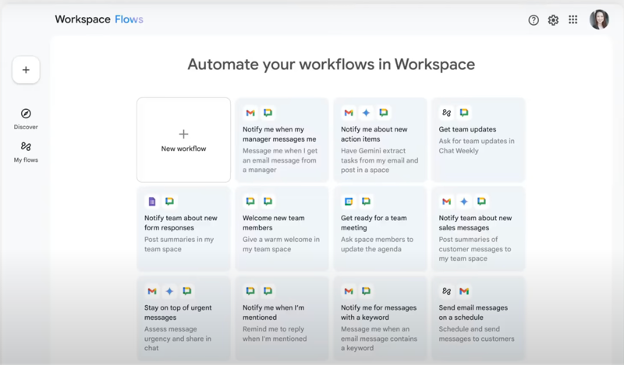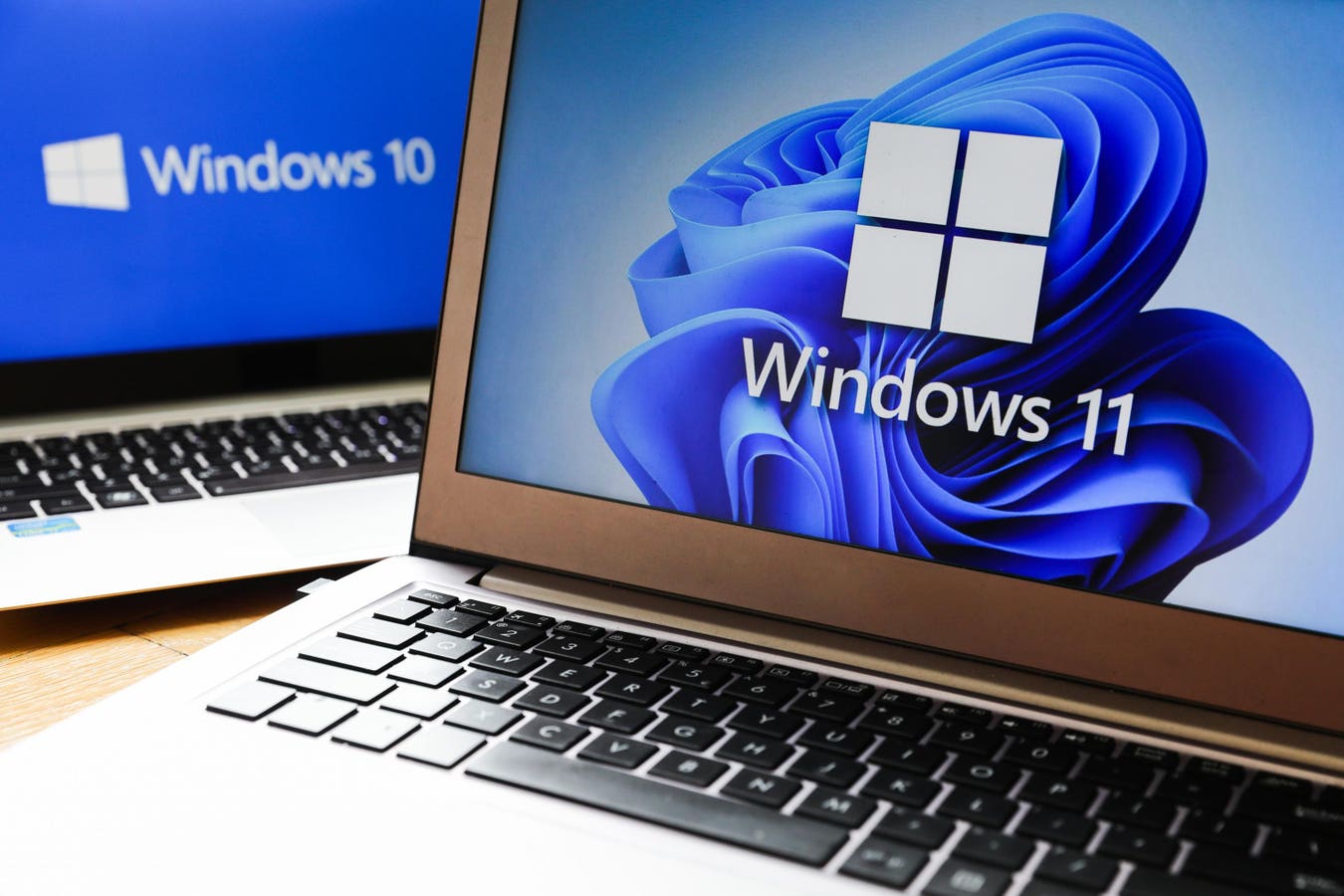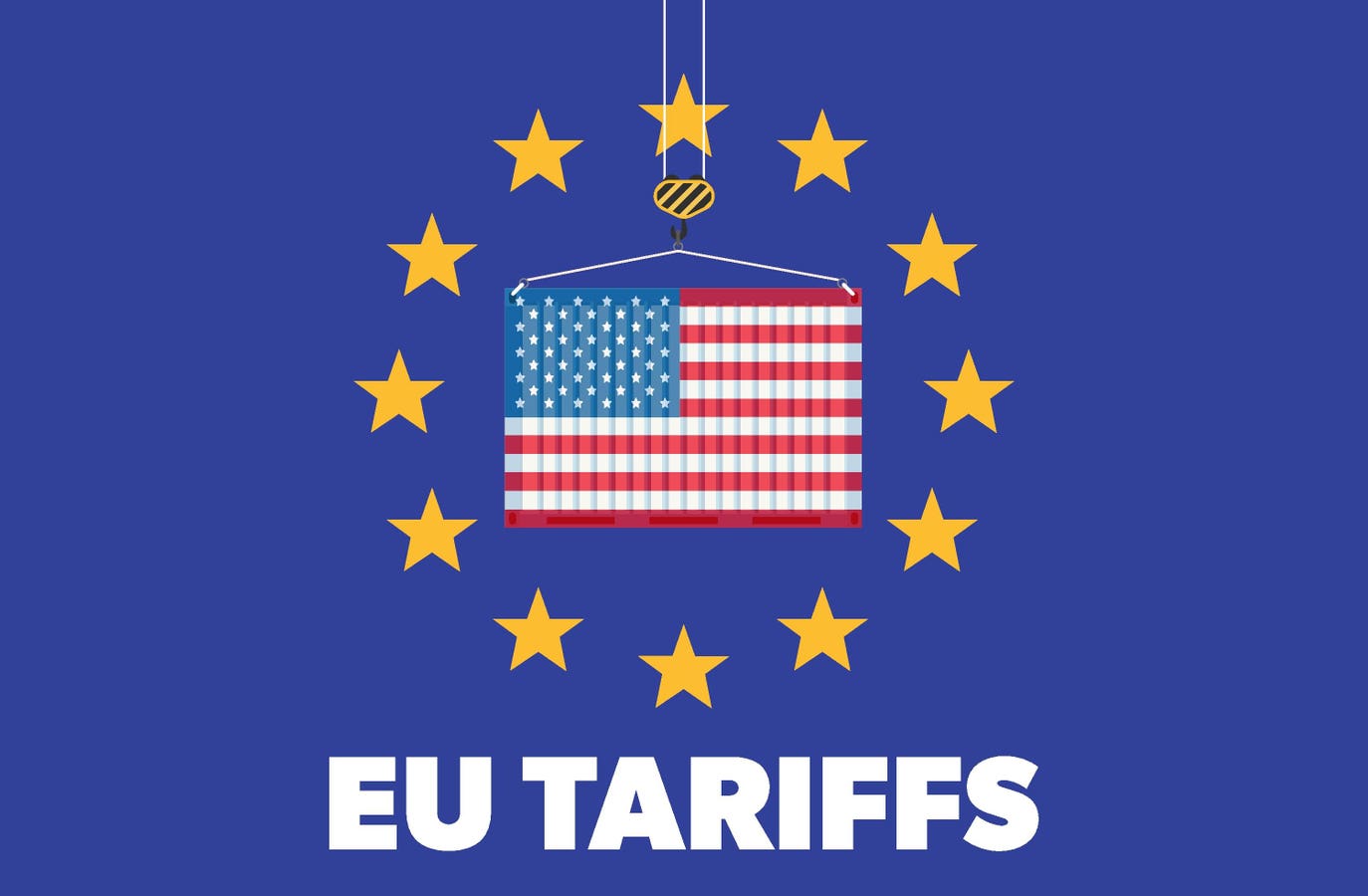Workspace Flows uses Gemini to handle complex workflows that require context and reasoning.
Google Cloud Next 2025 offered insights into Google’s approach to the evolving landscape of modern work, with a particular emphasis on integrating AI, infrastructure and interoperability across the enterprise. The event’s announcements and demonstrations reflected a strategy to embed AI into daily workflows, aiming to enhance tool accessibility for employees and support organizational adaptation during ongoing digital transformation.
(Note: Google is an advisory client of my firm, Moor Insights & Strategy.)
AI As An Operating Layer
A prominent theme from the event was the shift of AI from an experimental feature toward a foundational layer within enterprise technology — and supporting enterprise workers’ everyday tasks. During the keynote, Google Cloud CEO Thomas Kurian called out the fact that the business delivered more than 3,000 product advancements across Google Cloud and Workspace in the past year, many of which were AI-specific.
Google reports that Workspace now facilitates over two billion monthly interactions with its AI-powered features for business users. This usage level suggests considerable integration of AI into routine workflows, including communication, document creation, data analysis and decision support.
Google Workspace: Evolving Toward A Digital Teammate
Google’s strategy for Workspace appears to be evolving into areas beyond the scope of the traditional productivity suite. AI capabilities, powered by models such as Google’s own Gemini, are being integrated across applications including Gmail, Docs, Sheets, Meet and Chat — tried-and-true productivity domains — as well as new tools such as Google Vids and Workspace Flows. These features aim to assist with tasks that involve drafting, summarizing, analysis and automation. This could potentially make advanced functions such as data visualization, video production and research more accessible to a broader range of employees.
For instance, Gemini in Workspace can help users summarize emails, draft documents, generate presentations and create videos from prompts. The “Help me analyze” feature in Sheets provides data insights without requiring advanced spreadsheet knowledge. I’m especially looking forward to using Workspace Flows (shown in the image at the top of this article). Flows represents a process-automation initiative across Workspace, employing custom AI agents called “Gems.” These agents are intended to orchestrate specialized, multistep tasks. I have been exploring Gems, and while the output quality varies, I find the tool particularly helpful for brainstorming and have observed improved results when I use fine-tuned prompts.
AI Agents And Collaboration
During the event, Google highlighted the development of AI agents and platforms, including Agentspace. This platform facilitates the creation and deployment of multimodal AI agents capable of reasoning, planning and interacting across various business applications and data sources. These agents are designed to assist with routine tasks such as information retrieval and workflow automation, allowing employees to concentrate on more complex or collaborative work.
Google Agentspace aims to unify enterprise search and productivity across both Google Workspace and a wide range of third-party applications. It offers connectors for apps including Microsoft SharePoint, Box, Jira, Salesforce, ServiceNow and Slack, in addition to Google’s own tools. Agentspace allows users to search, analyze and take action across these multiple platforms from a single interface. It supports prebuilt and custom AI agents interacting with various connected systems.
At the event, Google gave an example of how AI agents built on Agentspace can automate the healthcare claims process. These agents handle multi-step workflows such as claim intake, validation, documentation checks and communication with payers and providers by integrating with existing healthcare systems and data sources. By orchestrating these tasks autonomously, the agents should significantly reduce manual effort, accelerate claims resolution and reduce staff members’ cognitive load. This use case exemplifies Google Cloud’s vision for agentic AI: not just automating isolated tasks, but orchestrating multistep business processes across an organization using interoperable agents and secure, enterprise-grade AI infrastructure.
For comparison, Microsoft Copilot focuses on deep integration within Microsoft 365 applications such as Word, Excel, PowerPoint, Outlook and Teams. Copilot’s primary strength lies in its contextual assistance and automation within these apps, leveraging Microsoft Graph to access user data and organizational content. While Copilot can be customized and does offer some integration with third-party applications, its core functionality and deepest integrations are within the Microsoft ecosystem.
Infrastructure And Interoperability
AI interoperability is another key element of Google’s strategy. The platform is designed to allow organizations to integrate AI with existing IT environments and connect with various software vendors and partners. Support for open standards and protocols signals Google’s intent to foster ecosystems that can operate across different platforms and providers.
This commitment to openness is underpinned by Google’s infrastructure, which includes 42 regions and more than two million miles of network cables, providing a substantial pathway for these efforts. The introduction of Cloud WAN, for instance, aims to extend Google’s private network availability to enterprise customers and support the efficient and secure movement of data, models and applications across regions. This infrastructure and the related services suggest a capacity to support the integration and deployment of AI solutions for organizations of varying sizes.
Security, Privacy And Responsible AI
Along with the deeper integration of AI into workflows, Google also addressed security and privacy considerations. New tools and integrations, such as unified visibility and monitoring with Wiz, are intended to assist organizations in managing risk. (For more on the specific role of Wiz, see my colleague Will Townsend’s analysis of Google’s Wiz acquisition.) Whether we’re talking about Google or any other AI provider, enhancements to data governance and compliance features are critical for supporting organizations in meeting regulatory requirements as they adopt AI at a grander scale.
What Are The Implications Of Agentic AI For The Workforce?
Integrating AI into the workplace presents both technical and cultural considerations. As AI agents and automation take on more routine tasks, employees may have more capacity for creative problem-solving, collaboration and strategic work. Google, along with other AI providers, reports that early observations from organizations adopting these tools show increased productivity, along with new opportunities for skill development.
As organizations consider integrating agentic AI, some changes in team structures, workflows and required skills could eventually be necessary. New roles could emerge focused on managing and collaborating with AI agents, requiring organizations to develop skills for effective human/agentic teamwork and to establish governance structures for this digital workforce. In my conversations with enterprise leaders, a consensus has yet to emerge regarding how companies will source (akin to hiring) AI agents (perhaps through an HR function) and how they will be evaluated, which could involve IT for performance and the relevant business unit for KPIs.
In my view, investment in upskilling, change management and thoughtful workflow design appears to be necessary at all organizational levels to effectively position both personnel and technology for success.
Beyond The Stage: From Vision To Value
Google’s approach to the future of modern work — as reflected by the announcements and discussions at Next 25 — is showing up when Workspace is evolving into a centralized platform for AI-powered collaboration. At the same time, the company’s investments in agentic AI and infrastructure are intended to support new forms of productivity and organizational agility.
Taken together, the announcements from Google Cloud Next 2025 highlight a strategy focused on connecting disparate tools and platforms through AI and open integration. The ultimate impact for enterprises will depend on adoption and execution, and specifically how effectively these innovations translate into real-world environments to address business requirements and deliver value. Keynotes always make new technology sound impressive, and Google’s demos have certainly set high expectations. The next step is to see how these tools can deliver meaningful impact at scale.
Moor Insights & Strategy provides or has provided paid services to technology companies, like all tech industry research and analyst firms. These services include research, analysis, advising, consulting, benchmarking, acquisition matchmaking and video and speaking sponsorships. Of the companies mentioned in this article, Moor Insights & Strategy currently has (or has had) a paid business relationship with Box, Microsoft, Salesforce and ServiceNow.








